What is Paid Media?
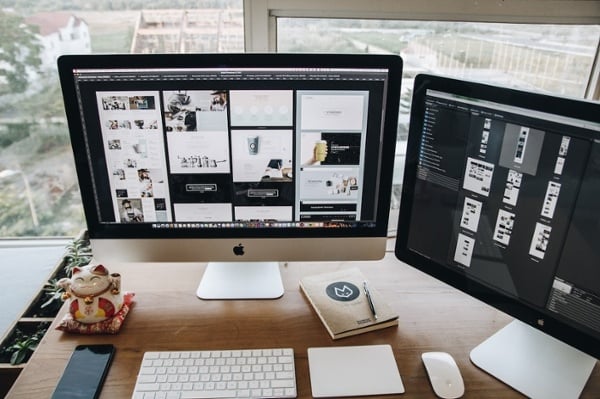
You’ve probably heard of the different types of media: paid, earned, and owned. You know they’re all useful tools that can help you grow your business, but maybe you’re not exactly sure what each of them specifically entails. If you're not exactly sure what the term "paid media" means, it's okay, I’ve got you covered.
What is Paid Media?
Paid media (aka paid media advertising) is an outbound marketing strategy that includes any marketing tactics you pay for. Digitally speaking, paid media includes things like paid search ads, shopping ads, display ads, social media ads, and more. These ads all work to get you in front of the right people, at the right time. If you've got a bomb paid media services specialist (ahem, we do) you can segment and place these ads strategically to get views from your ideal audience.
Paid media advertising is one of the more complex types of marketing, simply because there are so many ways to go about it. But, just because it's complicated doesn't mean you should avoid it! Nowadays, a good paid media strategy has the potential to generate lots of qualified leads and take your business’s marketing ROI to the next level.
Strap in — I’m about to give you the complete breakdown of what paid media is used for, what types of paid media you can use, and how to optimize your paid media strategy to maximize your budget.
Why Use Paid Media?
Paid media serves multiple purposes. While it might feel like a bit of a traditional advertising strategy, paid media is a great way to get in front of the right leads, fast. Most importantly, it’s a great way to promote the content you've already developed, and bolster your company's messages.
Paid media is particularly useful when you're working with a piece of content that hasn't gotten the organic engagement you'd hoped for, and needs a little boost for impressions.
Since paid media ads are made for segmenting and targeting, they’re the best option to instantly get in front of your ideal audience and engage with them. They even have the power to reach audiences that might not have ever come across your company otherwise. All that being said, when you complement your inbound marketing strategies with an outbound paid media strategy, you’re sure to expand brand reach, drive exposure and engagement, and generate more leads.
A Complete Guide to the Different Types of Paid Media
When it comes to picking which type of paid media campaign is right for your company’s strategy, the choices can be overwhelming. Here’s a guide you can use to understand the differences between each ad channel and type, so it’s easier to narrow down. You can thank me later!
Google Ads
Google is a popular and effective paid media platform due to its robust targeting and analytics capabilities. The platform also allows you to bid on select keywords, which is a great way to maximize your marketing budget and ROI. And, of course, Google is the most used search engine in the United States. Within the Google Ads platform, there are three main ad options: search ads, shopping ads, and display ads. Let’s run through them:
Google Search Ads
Google search ads are a form of native advertising. They appear at the top of the search engine results page after a user makes a query using keywords relevant to your ad. These ads will look very similar to organic search results, but they’ll say “Sponsored” or “Ad” next to them. And since most search engine users don’t usually look past the first page of results, they’re likely to be seen.
Google Shopping Ads
By 2024, it’s estimated that around 280 million people in the United States will shop online. Therefore, Google’s Shopping feature is a great place to promote your B2C product lines.
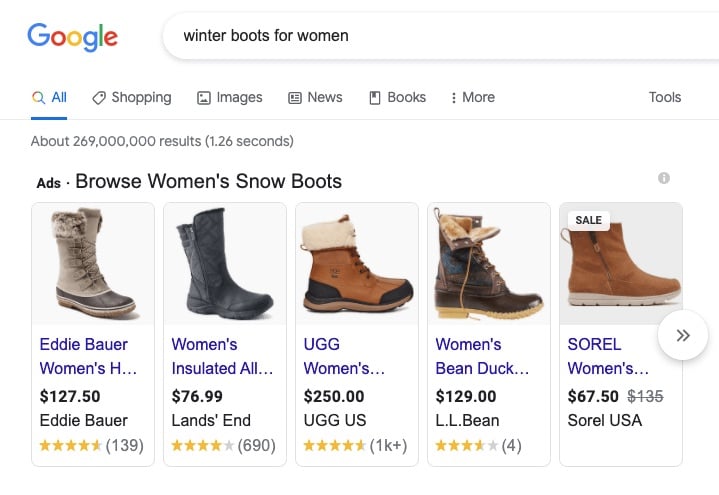
Similar to search ads, shopping ads appear on the search engine results page. However, you’ll find them in the “Shopping” category when a user searches for a particular product. There are a few different ways to optimize shopping ads, whether you want to promote a full product line or a singular product.
Google Display Ads
The Google Display Network consists of hundreds of sites like YouTube or Weather.com that host ads. These ads appear directly on the sides in banner or sidebar formats. These ads are great for targeting audiences based on location, sites they’re visiting, remarketing lists, and search history. They can even help you get in front of potential customers that haven’t searched any of your relevant keywords yet.
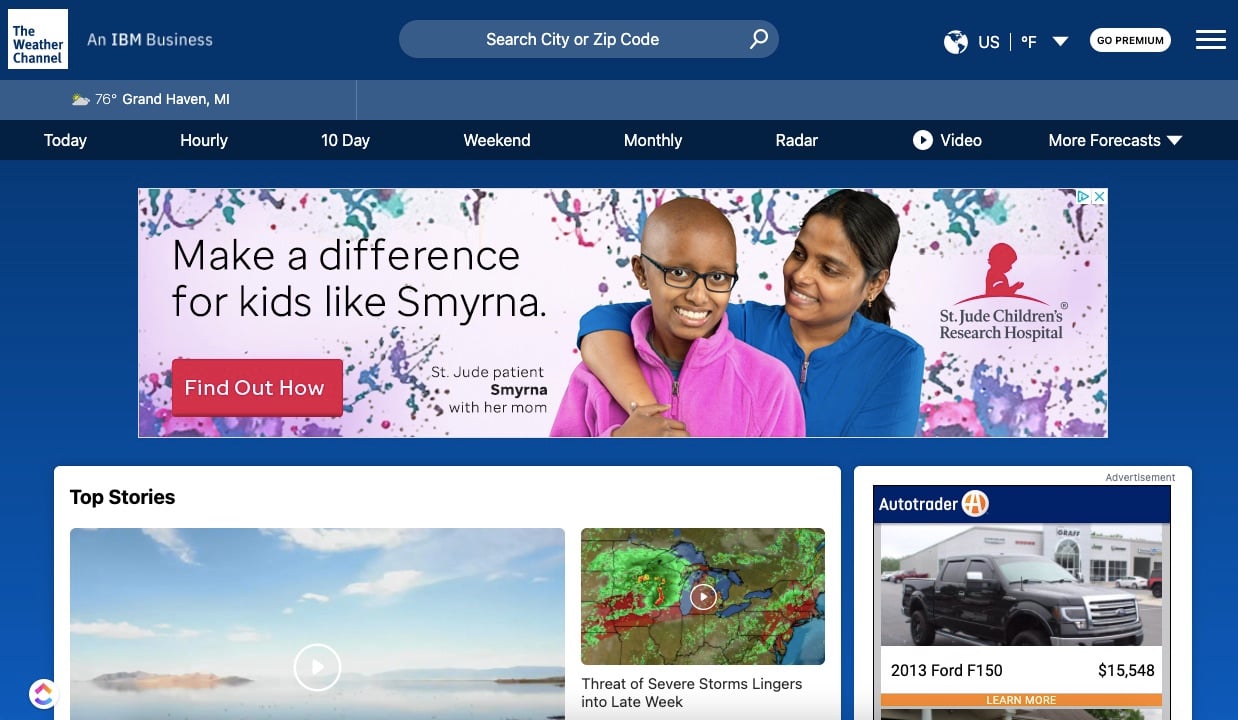
Microsoft Ads
Microsoft ads, formerly known as Bing ads, are similar to Google ads in that there are search, shopping, and display ads that can be targeted towards specific audience segments. However, there are a few things that make them different and even potentially more effective for certain situations.
How Do Microsoft Ads Differ From Google Ads?
- To start, Microsoft is a PPC giant. Any PPC ads placed through the platform operate on Bing, Yahoo, and AOL search engines. Although none of these search engines are as widely used as Google, all three of them combined create a large user base.
- Another unique characteristic of Microsoft ads is the audience that uses its search engines. In general, Microsoft search engine users are a bit older, more educated, and higher-income than Google users. If that sounds like your audience, it's a smart place to be.
- The final defining characteristic of Microsoft ads is that they’re usually a little cheaper than Google ads when you look at cost-per-click rates. We know paid search ads are a good investment regardless, but if you’re trying to maximize your marketing budget and your audience is using Microsoft, it’s a double bonus.
Social Media Ads
We’ve talked about the difference between social media marketing and advertising before, but here’s a bit of a deeper dive into the advertising part. Remember, this is what you pay for! The three main social media platforms we recommend, especially for manufacturing and construction companies, are Facebook, LinkedIn, and Instagram.
Facebook Ads
Facebook is the most popular social media platform, which also makes it a paid media powerhouse. And as weird as you may feel about the Facebook gods knowing its users' information, they definitely make the platform one heck of an audience targeting machine. Since it has a lot of insight on the lives of its users, your company can use that information to segment by age, occupation, gender, interests, and on and on and on.

On Facebook, you’re able to choose from a variety of ad formats. Like, we’re talking around 10 different formats. So whether you’d like to run a basic video ad or a more robust instant experience ad, you can do it. Done right, you'll start pulling in some seriously qualified leads.
New to Facebook Advertising? Check out Facebook Advertising 101: Types of Facebook Ads
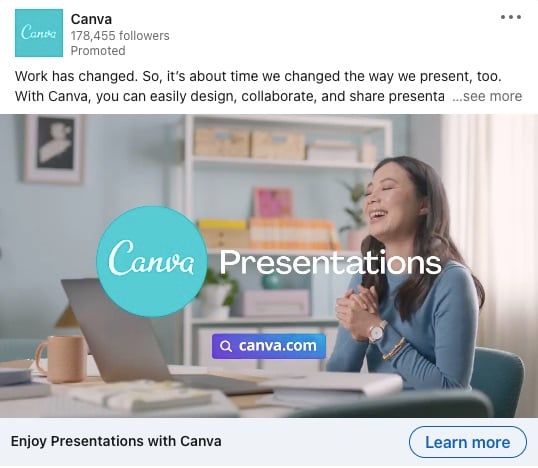
LinkedIn Ads
LinkedIn advertising isn’t for every company. But it definitely is a great paid media platform for B2B and professional-oriented companies. The platform hosts users looking to advance their careers, learn industry knowledge, and connect with other professionals.
That said, LinkedIn allows you to target users based on information relevant to those things, such as industry size, job title, job function, job seniority, field of study, professional skills, and degrees. It can be a really great way to get your products and message in front of high-level decision-makers within companies. There are 5 popular types of LinkedIn Ads to choose from, including these:
- Text and display - Exactly what they sound like. Text and an image that shows up anywhere but a news feed (think sidebars, banners, messaging inboxes).
- Sponsored content - These are the LinkedIn ads that show up in users’ news feeds.
- Premium display advertising - These are similar to text and display ads, but they take up a little more space on either the side, top, or bottom banner of a LinkedIn page.
- InMail ads - These LinkedIn ads look like messages or emails, which makes them a bit more personal than other formats.
- Follow company ads - These LinkedIn ads show up in users’ news feeds but have a “Follow” option that encourages them to follow your company for updates and information.
Instagram Ads
It’s no secret that Instagram gets a ton of engagement, even more than Facebook. That’s because of its visual priority on photo and video content. Similar to regular posting, all Instagram ads require a photo. Instagram ads have some other unique benefits. First of all, these ads look very similar to regular posts on a user’s feed, so engaging with them feels easier and more natural. Also, most ad links open up within the Instagram app, allowing users to easily view more information while remaining in the app.
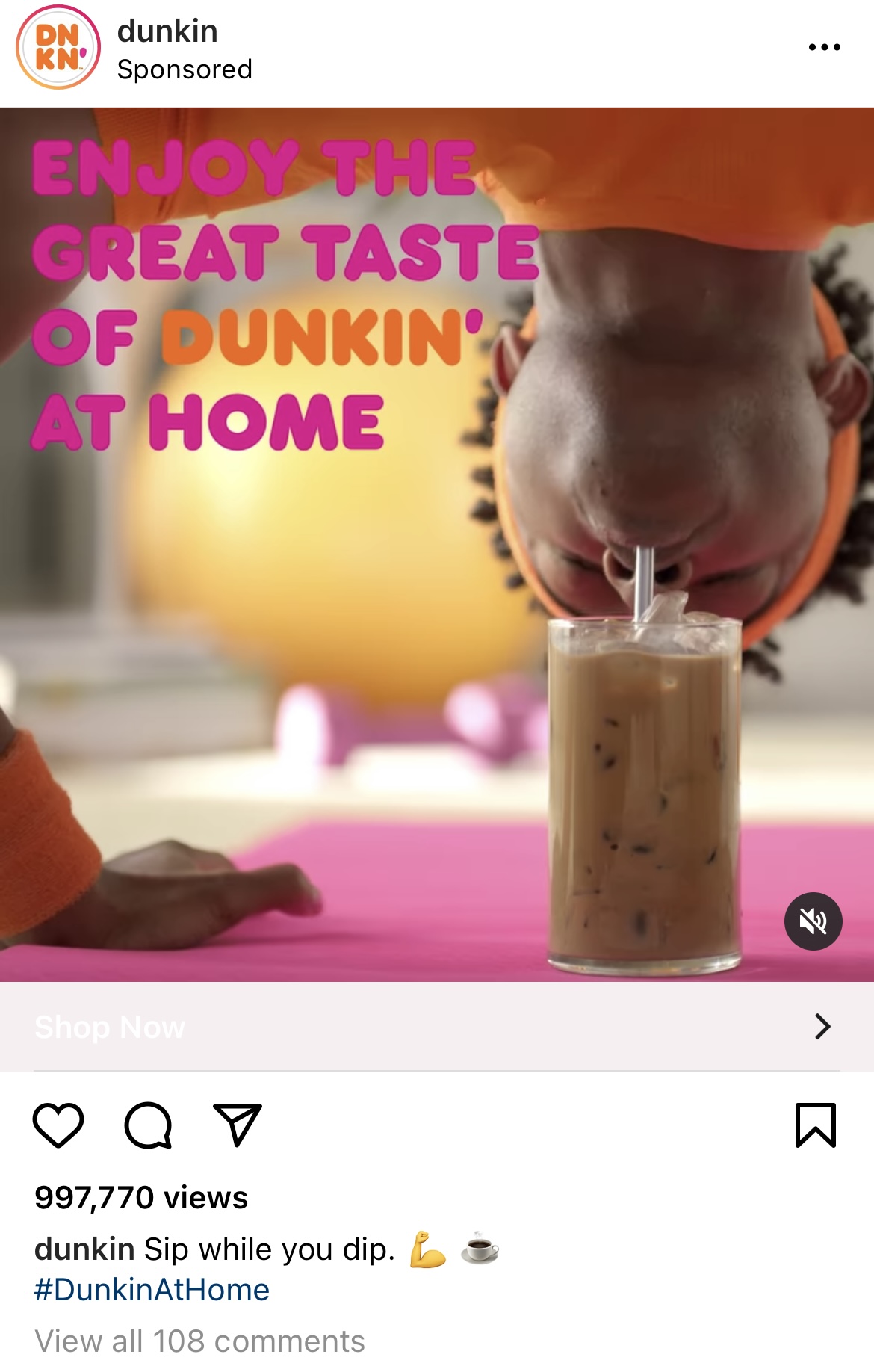
Instagram is owned by Facebook, so available Instagram ad types are similar: photo, video, shopping/collection, explore, carousel, story.
Get the Results You're Looking For
Evenbound has established professional and certified partnerships with key paid media providers in the industry, including Google, Microsoft, and Facebook. Our big-picture paid media campaigns are guaranteed to deliver serious results for your business on every platform. If you need some paid media help, schedule a free consultation with our experts today.



